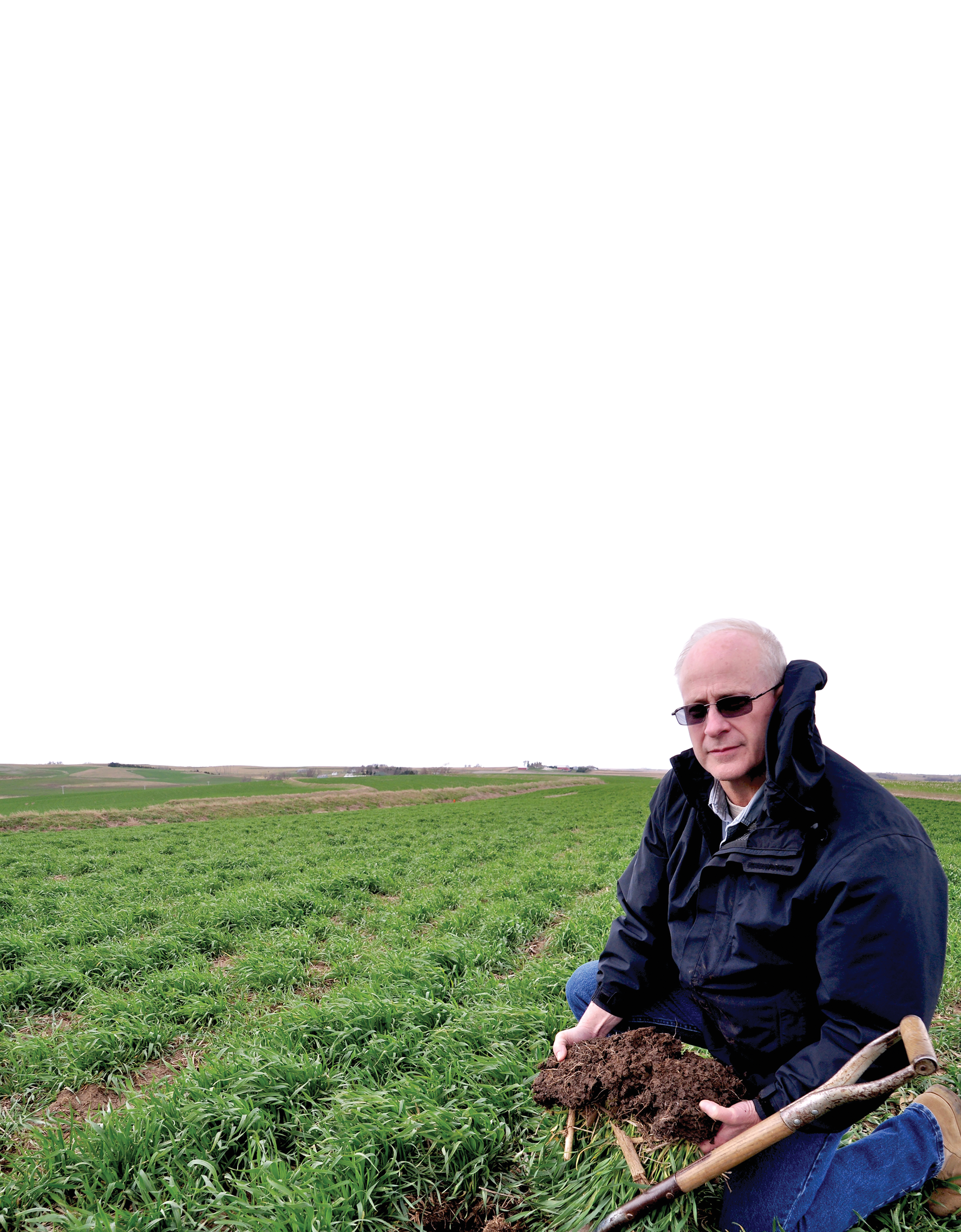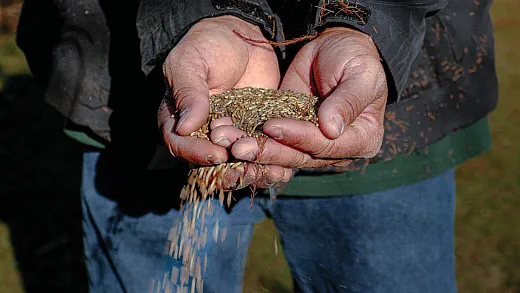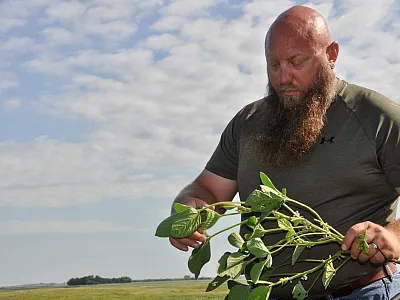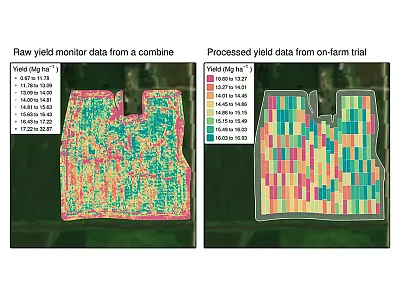Cereal Rye Among the Best Cover Crops at Weed Suppression


Cereal rye, as a fall-planted and winter-grown cover crop, offers many benefits. It tolerates both frigid winter temperatures and warm springs. It also tolerates both the wet conditions and drought. It reduces soil erosion, enhances soil organic matter, improves soil water retention, and reduces nutrient leaching. But, it’s not a panacea, of course. This article will discuss some of the benefits, challenges, and considerations of using cereal rye as a cover crop. Earn 0.5 CEUs in Integrated Pest Management by reading this article and taking the quiz.

Weed suppression takes many forms, and you’ve probably tried or advised others to try most of them. But one that’s gaining traction—especially in organic and no‐tillage systems—is cover cropping. The use of cover crops jumped by 50% from 2012 to 2017, and it’s still continuing to increase, according to USDA data. That’s partly because there are more financial incentives promoting cover crops, but it’s also because of issues like increasing herbicide resistance. When your weed suppression no longer works, you have to find something new. Many different plants are used as cover crops: Legumes like alfalfa and clover, brassicas like turnips, nonlegume broadleaves like spinach, and grasses or cereals like winter wheat and triticale are common. But cereal rye, a grass, is one of the most common and is growing in popularity.
Cereal rye, as a fall‐planted and winter‐grown cover crop, offers many benefits. It tolerates frigid winter temperatures like in the U.S. Northeast and upper Midwest and warm springs across the South. It also tolerates both the wet conditions and drought common in subtropical regions of the U.S. like Texas and Virginia, says Gustavo Camargo Silva, a doctoral student in weed science at Texas A&M University. It reduces soil erosion, enhances soil organic matter, improves soil water retention, and reduces nutrient leaching, especially nitrogen. Cereal rye is also ubiquitous, and thus a relatively inexpensive crop to plant, says Muthu Bagavathiannan, a weed scientist also at Texas A&M. And, according to a recent paper in Agronomy Journal (https://doi.org/10.1002/agj2.21347) by Silva and Bagavathiannan, it can be up to 100% effective at weed suppression.
It’s not a panacea, of course. There are cases where cereal rye cover cropping is counterproductive or doesn’t work. In super wet environments, it can be counterproductive as it tends to keep the soil moist. In super arid environments, it can steal water from cash crops. And cereal rye’s ability to scavenge nitrogen means it doesn’t release it quickly, so it might not be the first choice for crops like tomatoes that need a lot of nitrogen. Despite certain limitations, cereal rye cover cropping can be very effective at weed suppression in most circumstances, Silva says. That’s true for both organic and conventional farming.
Such “alternative” crop management practices that change the environment to negatively affect weeds should be included in weed suppression tactics that extension agents and CCAs recommend, says Uriel Menalled, an agroecologist post‐doc at Cornell University, who was not involved in the Agronomy Journal research, but also studies cereal rye cover cropping. Cereal rye cover cropping, as well as other such ecological weed management practices, can be productive and profitable weed suppression tactics, Menalled says.
How It Works

Cereal rye as a cover crop is typically planted in the fall after harvest of the cash crop. Thus it’s well established before spring weed seeds are ready to sprout. It can be used as a living “mulch” (as in, the crop isn’t terminated before the new spring cash crop is planted), or it can be terminated—whether through herbicides or physical methods like rolling, crimping, or mowing—and left as a thick mat of mulch biomass on the ground. More often than not, the crop is terminated and used as mulch.
As a cover crop, cereal rye suppresses weeds in both competitive and noncompetitive ways. First and foremost, like other cover crops, it outcompetes weeds for space, light, nutrients, and water. When sown in the fall, cereal rye grows well before spring annual weeds start to sprout, thus “hindering the germination, emergence, and establishment” of the weeds, Silva and Bagavathiannan wrote. That’s especially true for annual weeds. And it’s especially true if the cereal rye crop is terminated prior to the spring growing environment. Though that’s not technically “outcompeting” the weeds, the thick layer of biomass creates a strong physical barrier—blocking light as well—that effectively halts weeds from growing.
Without a cover crop, winter or early spring weeds don’t have any competition for nutrients and can go buck wild. But as cereal rye grows in the winter, the crop uses any available nutrients, especially nitrogen and phosphorus, so weeds are nutrient‐limited, which hinders their growth and development.
Cereal rye’s relationship with weeds and water is a bit more nuanced. While it’s growing (as a living mulch), it takes up a lot of water and can leave the soil deficient if not irrigated or if there’s a drought. That reduction in soil moisture is good for weed suppression—great, in fact. It can reduce the emergence of annual weeds by up to 95%, according to one study cited in Silva and Bagavathiannan’s paper. (That water deficit can play a problem for the cash crop grown next to the cover crop though, if not irrigated.) On the other hand, terminated mulch can actually improve soil moisture levels, which is helpful for the cash crop, especially during droughts, but also provides more moisture for annual weeds. So if you’re not irrigating your cash crop, you need to think about how you want moisture controlled before deciding to terminate the cover crop or not—you have to think of the water balance, Bagavathiannan says.
How and how well weed suppression works through noncompetitive mechanisms is less well known, Silva and Bagavathiannan noted. Allelopathy (chemical interactions of the cover crop plant with other plants), reduction in soil temperature (through shading and soil moisture control), and reduction in light quality (chemical changes in the weed in response to more shade) are three primary noncompetitive mechanisms by which cereal rye controls weeds. More research is needed into how and how well these mechanisms work, Silva and Bagavathiannan wrote.
As to which mechanism of weed suppression is most dominant in a given system, Silva and Bagavathiannan wrote, it depends on climate, environment, and management choices.

Concerns and Challenges
Water management is one of the more significant challenges with using cover crops like cereal rye. So “climate‐specific management strategies are essential,” Silva and Bagavathiannan wrote. That goes for both regional and local geography too, as even the direction a field slope faces—e.g., north or south—will affect moisture levels. Certified Crop Advisers and extension specialists can help farmers determine the best strategy for their individual fields.
Another challenge is the type of weeds that affect a field. Because research so far has indicated that physical barriers and competition suppress weeds the most, cereal rye cover crops tend to work best on annual weeds that need good conditions to germinate and emerge. Cereal rye cover crops don’t tend to work nearly as well on perennial weeds, according to a 2022 study published in Ecosphere by Menalled and his colleagues. Using cereal rye cover crops in a location where perennial weeds are already thriving could be even more dangerous as it could force further selection of such perennial weeds in a field, Menalled says. In the case of perennial weeds, he says, farmers may need to find a different form of weed suppression like increasing cash crop density.
Another aspect to consider is how thick your mulch needs to be. Generally speaking, the thicker the biomass, the better the weed suppression. But there are regional differences. In some locations, like the Midwest, more biomass is needed for weed suppression, whereas in other locations, such as the drier West, you can get away with a much thinner mulch layer and still get great weed suppression, Bagavathiannan says. Certified Crop Advisers and extension agents should take this into consideration in their recommendations.
Advice for the Advice‐Givers
If a farmer were to inquire about alternative options for weed suppression, CCAs and extension specialists should know that “cereal rye is a very good cover crop for weed suppression and it’s adapted to a lot of conditions,” Silva says. The data are “very convincing,” Bagavathiannan says.
If a farmer is experiencing issues with weeds resisting herbicides—especially annuals like pigweed, morningglory, and grasses like Johnsongrass—cereal rye cover cropping may be a good option. Even more, Menalled adds, advisers should provide materials to show how cereal rye cover cropping may be combined with other techniques to create a full system of “ecological weed management.”
Cereal rye cover cropping is one tool that can “reduce farmer reliance on really input‐intensive practices like herbicides and heavy tillage,” Menalled says. “It’s not that you can’t use herbicides or tillage at all, but the idea is to reduce reliance on these practices and hopefully create farm systems that are less damaging to the environment.” At the same time, he says, cover cropping also helps make a farm more resilient to climate change, by for example, helping reduce the soil erosion that occurs with increasingly common extreme precipitation events. So not only does cover cropping help the soil and the environment in the long term, but it also protects your farm immediately from runoff. It can also help with water management in drought‐stricken environments.
Financial incentives for introducing cereal rye cover crops also exist both nationally and locally, Bagavathiannan says. The USDA‐NRCS Environmental Quality Incentives Program allocated $155 million toward cover crops in 2018 alone. Certified Crop Advisers and extension specialists should research what programs local farmers qualify for and include that information in their advice, he says.
The bottom line is that we should be working with farmers to try cover cropping, Bagavathiannan says. Carefully choose the best management practices—such as when to plant, when and how to terminate the cover crop—and then start small. Try it on a few acres at first, see how beneficial it is, he says, and then expand from there.
DIG DEEPER
For more information, check out the Agronomy Journal article, Mechanisms of Weed Suppression by Cereal Rye Cover Crop: A Review,’’ by Gustavo Camargo Silva and Muthukumar Bagavathiannan at https://doi.org/10.1002/agj2.21347.
Self-Study CEU Quiz
Earn 0.5 CEUs in Integrated Pest Management by taking the quiz. For your convenience, the quiz is printed below. The CEU can be purchased individually, or you can access as part of your Online Classroom Subscription.
- A recent article in Agronomy Journal found that cereal rye as a fall-planted and winter-grown cover crop can be up ______ effective at weed suppression.
- 25%
- 50%
- 75%
- 100%
- Cereal rye cover crops tend to release nitrogen quickly.
- True.
- False.
- Which of the following is a competitive way in which cereal rye suppresses weeds?
- Allelopathy.
- Reduction in soil temperature.
- Nutrient and water uptake in the winter before spring weeds sprout.
- Reduction in light quality.
- Cereal rye cover crops tend to work best on annual weeds.
- True.
- False.
- Which of the following is true of cereal rye as a cover crop?
- As terminated mulch, it can leave the soil deficient of water.
- As a living mulch, it can reduce the emergence of annual weeds by up to 95%.
- It tolerates wet conditions but not frigid winter temperatures.
- It is typically planted in the spring.
Text © . The authors. CC BY-NC-ND 4.0. Except where otherwise noted, images are subject to copyright. Any reuse without express permission from the copyright owner is prohibited.










